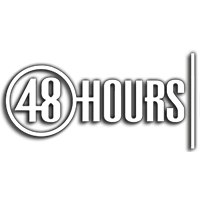Since 1998, the Waismann Method® team has provided ultra rapid detox for treatment for patients suffering from opioid use disorder (OUD). The notion of sleeping through opioid withdrawal has become more and more popular for its comfort and for providing a nearly 100 percent detox success rate.
Some less reputable rapid detox centers have advertised claims of “overnight” detox, “24-hour” detox, or even a “painless” detox to attract patients for opioid treatment. Although the rapid detox process shortens and reduces discomfort, there is no such thing as a completely painless withdrawal. Drug withdrawal, by nature, is an uncomfortable event. For that reason, being in a medical facility and having medical management makes opioid detox much safer and easier to get through.
Furthermore, an opioid user’s body does not function regularly. Although the sleeping part of the detoxification is fast, proper inpatient cares the day before and a few days after the procedure is crucial for the patient’s safety, comfort, and success.
Read All About It Here: What Is Rapid Detox and How Does It Work?
For over 26 years, people from all over the world have chosen Waismann Method as their opioid detox provider.
We know the challenges you face and the importance of creating a unique and personal experience for you right from the start.Call for Detox Options 1-800-423-2482
Rapid Detox for Opioid Treatment Lays the Foundation for Successful Follow-Up Care
According to the National Institute on Drug Abuse, more than 130 Americans die of an opioid overdose every day. Some treatment centers are pushing the idea of medication-assisted treatment (MAT) drugs to prevent further overdoses. However, providing more opioids could prolong a person’s opioid use disorder instead of treating it. The most beneficial opioid treatment focuses on complete detoxification in addition to emotional care to assess what led to opioid use.
Rapid detox — also called detox under anesthesia or ultra-rapid detox — provides the most effective detox from opioid drugs. It lays the foundation for successfully treating the underlying issue that caused opioid use in the first place.
The Waismann treatment center team believes addiction is often a consequence of untreated emotional issues or an increasing, untreated physical dependence. We see medical detox as the best first step in an effective solution. Waismann rapid detox as an opioid treatment has proven its excellent results by successfully treating thousands of patients over the last 22 years.
Why Rapid Detox Works
Rapid detox is significantly different from other opioid treatments because it has a nearly 100 percent detox success rate. After detox, patients are entirely opioid-free. This freedom better equips patients to manage then adjust to being opioid-free with the help of non-opioid medications and therapy.
Science hasn’t replaced preconceived ideas of who opioid users are and their access to treatment. When they reach that point, then medically assisted detoxification protocols could become the standard of care. An opioid epidemic does not only plague America, but it’s also stuck in the thinking that a person must fall into a life cycle of medications and rehab stays. That’s not true. When a person gets proper medical detox from a board-certified medical doctor, followed by individual emotional care, they can break the addiction cycle.
Benefits of Ultra Rapid Opiate Detox
Additionally, rapid detox for opioid treatment conducted in a full-service, JCAHO-accredited hospital offers several benefits — such as safety, effectiveness, and privacy — that other treatment methods do not. Rapid detox patients typically experience the following advantages:
1. Rapid Detox Allows People to Seek Treatment Without Delays
Fear of withdrawal can be a significant barrier between the user and opioid treatment. Making detox more comfortable is not much more effective, but it can make people seek treatment sooner. Anesthesia-assisted detox offers the fear-relieving benefit of sleeping through the worst part of acute withdrawal and having hospital staff on hand for any need.
2. Detox is Medically Managed
Staff admits patients to a private hospital room where a comprehensive medical examination starts, before the anesthesia detox. Vitals, fluid retention, and many other effects of opioid use and detox are under the management and control of a team of medical professionals. An experienced, multi-board-certified medical doctor performs proper rapid detox in a private ICU room. In the ICU, he and his team have access to several medical specialists and several vital emergency resources. Patients should clearly understand the risks and benefits of this or any procedure before choosing any treatment type.
Additionally, the hospital setting enables the medical doctor to tailor the detoxification treatment plan in any way necessary. For example, if the doctor determines that anesthesia is not required based on a comprehensive medical evaluation of the patient, then he can adjust the opioid treatment protocol accordingly.
Detox protocols should not be predetermined. They should be adapted to the patient’s individual needs to provide the safest, most comfortable, and most effective complete detoxification possible. Only in a hospital is the doctor fully equipped to decide how and when to adapt detox protocols, access the medical resources necessary to address every potential medical issue, and determine the appropriate length of stay.
3. Nearly 100% Opioid Detox Success Rate
Because patients are asleep during ultra-rapid detox, they skip considerable withdrawal discomfort and achieve complete detoxification. This success might have otherwise been unachievable for them because of the difficulty of detoxing without anesthesia or medical support.
Furthermore, patients who suffer from anxiety and have not had success with other treatments might benefit from a complete detox under medical management. The ability to complete an opioid treatment detox plan successfully encourages people to continue emotional health with therapy.
4. Ability to Start Naltrexone or Vivitrol® Therapy Immediately
Vivitrol® and naltrexone are non-opioid medications that are incredibly successful tools. They help prevent relapse following complete opioid detoxification when used in conjunction with counseling. Rapid detox completely removes opioids from a person’s system so that they can begin one of these medications right away.
5. Counseling Without the Influence of Opioid Drugs
The American Society of Addiction Medicine advises combining rapid detox for opioid treatment with continued counseling. Without opioids after rapid detox, mental health professionals can provide a much more accurate diagnosis and a much more adequate plan for emotional care. Also, patients who are not influenced are mentally clearer to provide critical dynamic information and receive the support needed to achieve long-term results.
Why Other Treatment Centers Don’t Offer Rapid Detox for Opioid Treatment
Rapid detox by Waismann Method® continues to deliver exceptional medical care, unparalleled experience, and superior results. Some drug treatment centers claim to offer medical detoxification but do not provide the same level of medical care and do not operate in a full-service hospital. These lower medical standards create risks for patients and create confusion about what patients should expect from medical detox providers.
Find Out: How to Choose the Right Rapid Detox Treatment Center for You
Other drug treatment centers that attempted to provide rapid detox as an opioid treatment in the past when it was initially gaining popularity stopped offering it. In some cases, they could not keep up with the medical standards necessary to ensure patient safety and success. Additionally, performing rapid detox should only occur in a full-service hospital; it can be expensive from an operations perspective.
Some treatment centers don’t want to invest in that level of care, and some encourage patients to choose other methods of treatment they do offer.
Conclusion:
A rehab, for example, can be less expensive for a treatment center to operate but can generate income for long periods as patients stay for weeks or months. However, rapid detox for opioid treatment requires just one to two days in the hospital and several days or a couple of weeks in a licensed aftercare recovery center. Any follow-up therapy can be determined after rapid detox, based on the individual patient’s needs at their discretion.
From a patient’s perspective, the cost of one treatment over another might be a factor. However, a treatment’s health benefits, care standards, and success rate should, hopefully, be the deciding factors. Rapid detox for opioid treatment offers fast, safe, effective treatment and the best opportunity to be successfully opioid-free.






